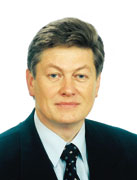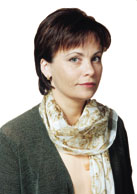The tense political year in Lithuania reaches a climax on 8 October as voters go to the polls for the Seimas elections. The 19 March local elections proved to be a major battleground for parties looking for momentum heading into autumn, and that has held true for the most part.
Between the two elections, everything has been heavily politicised, ranging from divisive legislation to populist petition drives alongside controversial advertising campaigns and promotion of opponents' gaffes, of course.
Much has changed since the 1996 general elections that swept the Conservatives into power, especially on the political scene. New populist parties have emerged in the centre, forcing ideological parties to adopt more hard-line positions. This, in turn, has caused splits in three of the five largest parties from the last parliamentary elections.
It is anyone's guess whether this new political landscape will bring stability or cause further chaos and division, especially if one of the three groupings—left, centre or right—fail to secure a solid majority.
The easy 70...
The split system in Lithuania means that general elections are, in a way, harder to predict than others in the region. Of the 141 seats up for grabs on 8 October, 70 are allocated by national proportional representation with a five per cent minimum threshold for parties. Several smaller parties have presented joint lists and others have latched themselves to larger parties. Looking at poll numbers, the distribution of the 70 seats is somewhat easier to predict.
 |
| Likely poll winner Artūras Paulauskas |
One recent poll by Vilmorus, published in Lietuvos Rytas on 16 September, showed that the New Alliance (Social Liberals) have widened the lead that they captured after the March local elections, in which they won the most seats. The centre-left party headed by former presidential election runner-up Artūras Paulauskas has 23.6 per cent support among respondents, up more than 6 points from the closest competitor. This is a sharp rise from a Vilmorus poll published in Lietuvos Rytas on 13 March—just before the local elections—showing the party rise a sharp 8.8 per cent to 11.2 per cent. (see full prediction table)
However, this additional support could be coming at the expense of its own coalition partners, especially the Centre Union. The Centre Union, on the top of the world and of the polls in 1999 after monopolising the political centre, fell strongly after the creation of the New Alliance.
 |
| ...but at the expense of Romualdas Ozolas? |
The Vilmorus poll from March showed the Centre Union already down to 8.3 per cent, but the party's fortunes have declined still further: the September poll showed a dismal 5.4 per cent support. Party leader Romualdas Ozolas has been overshadowed frequently by his coalition partners Paulauskas of the New Alliance and Rolandas Paksas of the Liberal Union.
Results for the Liberal Union have also been dropping as of late. When ex-Prime Minister Paksas joined the then-minor liberal centrist party, the party saw a major leap in support. In the March Vilmorus poll, though sliding a fair bit, the Liberal Union held the top spot with 12.5 per cent. However, that same poll showed the party lost 6.5 per cent just before the crucial elections, and the party did not fare as well as expected in March. The September poll shows a further decline at 7.7 per cent.
Although these three parties are in coalition—with a fourth, the small Modern Christian Democratic Union, but they are not running individually—the New Alliance has been gaining much of its strength from within. In March, the three parties combined for 32 per cent, while the September poll showed a combined 36.7 per cent—up by only a few points and mostly from the ranks of the undecided.
Although that 36.7 per cent total could give the three parties a commanding lead in the division of the 70 PR seats, the lack of actual gains as a group must be seen as disappointing for the coalition. All this has done is to solidify the status of Paulauskas as the prime ministerial choice and the New Alliance as the coalition (and most likely government) leader after 8 October.
Not to be outdone, the recent consolidation of the political left has been notably successful. Since the rise of Vytenis Andriukaitis in a heated leadership challenge, the Social Democratic Party has favoured more co-operation with the Democratic Labour Party (LDDP). Along with the small New Democracy (formerly Women's Party) of ex-Premier Kazimira Prunskienė and the tiny Russian Union, the bloc has moved strongly into second place.
 |
| Ex-President Algirdas Brazauskas comes back to lead the left wingers |
Led symbolically by former President, the leftist group held a strong second in the September Vilmorus poll at 17 per cent. Helped by the popular name of Brazauskas (with a 67.3 popularity rating), the group easily clinched the left-wing and will likely register an even stronger showing on 8 October. Brazauskas is not running for a seat, but has said he will consider the prime ministerial job if they win the elections. This coalition is also seen as a precursor to a full merger under the international Social Democracy banner, something the LDDP has been aiming for over the years.
What is surprising is the ruling Conservatives have revived their position in the polls over the last few months. In March, the party polled at five per cent exactly, although it had a stronger-than-expected showing in the local elections due to strong voter discipline. Throughout the year the party dipped several times under the dreaded minimum threshold, but surprisingly pushed its way up to seven per cent.
 |
| Can Vyautas Landsbergis bring the Conservatives back from political doom? |
Alongside the 1.1 per cent registered in the September poll by their coalition allies the Union of Lithuanian Political Prisoners and Deportees, the Conservatives may yet score a solid showing in the PR side of the vote. They are also the only right-wing force that is likely to win seats under the PR structure.
All other right-wing parties fall far below the five per cent minimum threshold. The two breakaway parties from the Conservatives—the Homeland People's Party and the Moderate Conservatives—are both near the bottom of the polls at below two per cent. The Christian Democratic Party of Foreign Minister Algirdas Saudargas is also mired at around two per cent, and party discipline will likely not help it enough to cross the minimum threshold of five per cent. Its own breakaway party, the Modern Christian Democratic Union, is running together with the centrist populist coalition. The fringe Christian Democratic Union of popular MP Kazys Bobelis is not expected to cross five per cent either.
The only other political force that is capable of crossing the five per cent barrier is the Peasants Party. The party has enjoyed strength from rural voters, especially those hit hard by the 1998-99 economic crisis. However, the Conservatives' use of its election-year war chest in recent months, as well as strong campaigning by the left-wing coalition, have dampened their public support, and the September poll shows the Peasants Party at 4.9 per cent—just under the threshold.
 |
| Is Ramūnas Karbauskis and the Peasants Party key in the elections? |
Despite its strong showing in the March local elections, the party has seen a steady decline in support as the general elections have drawn closer, losing about half of its polled support in the last three months. Whether the party makes the PR list is hugely dependent on rural turnout, which could be affected by anything from weather to the increasing anger of farmers over the cost of diesel.
A failure by the Peasants' Party to gain PR seats could give the strongest parties—such as the New Alliance and the leftist Brazauskas coalition—two extra seats from the PR distribution, which could be important.
There are also smaller parties running alone or in coalition, but none are expected to get near the five per cent barrier. Earlier, there was fear that a handful of radical and nationalist parties would team up to pool their highly localised support, but that never materialised.
The smaller coalitions formed are not regarded as major challengers, and Kaunas mayor Vytautas �ustauskas' radical Freedom Union is not likely to break five per cent alone. Social Democracy 2000, a moderate breakaway from the Social Democratic Party, is marginalised by the polls. The Polish Electoral Action is also unlikely to get the five per cent needed to get seats by PR.
Of course, the issue of turnout is paramount in this part of the general elections. In the September Vilmorus poll, some 22.2 per cent said they are either undecided or would not vote. Looking at the turnout rate trend, it is also unlikely that there would be a turnout as high as the poll indicated. Voter apathy may yet win out in October.
We can use the September Vilmorus poll to give us an indication of the possible distribution of seats come 8 October. However, we can further unscientifically extrapolate using other information, such as recent trends, post-poll events, and even party loyalty. Both versions can be found here.
Although the CER prediction numbers are not much different, several factors were taken into account. The Conservatives have the strongest voter loyalty, both in urban and rural regions, while many centrist parties have weaker party loyalty—this was apparent from the local elections.
The Peasants Party's rating has been dropping steadily over past months, but it is likely to have bottomed out and should rebound over the 5 per cent barrier. The Brazauskas group had been riding on good momentum, but has only so much more support to gain from the centre-left. The Vilmorus poll suggest that the centrist coalition of New Alliance, Liberal Union and Centre Union will gain 39 of the 70 PR seats, while CER's prediction shows a lower 35 of 70 PR seats.
Yet two weeks is a short time in Lithuanian politics, and could still significantly change public opinion. Inclement or spectacular weather can also adversely affect the turnout statistics, which could tip the balance for some parties close to the threshold. Last minute scandals and endorsements may shift the percentages enough to affect a handful of seats.
However, with all the campaigning by the parties, there is one very sobering statistic. The same 16 September Vilmorus poll shows that political parties are the least trusted institution in the country at a dismal minus 64 per cent—even lower than the dreadful minus 62.2 per cent recorded by the Seimas. How heavily that will impact the turnout number will be key in this race.
The difficult 71...
Pre-election analysis of the 71 individual constituency races is considerably more difficult. Party affiliation has to be taken into consideration alongside the various personalities involved, as well as the pool of competition. This task is compounded by controversial change to the system: first-past-the-post without a second run-off round (see Amber Coast, Changing the Rules at the Half, 10 July 2000, for more on this change).
Despite the late change, the larger co-operation partners structured their candidates to minimise the damage. The Brazauskas coalition is a true coalition, as none of its four constituent parties are running against another in any of the 71 constituencies. Among the centrist group, it alone promised that its leaders would not run against each other and has staggered most of its top candidates. Judging by the top 12 on their PR list, there are only five constituencies that overlap.
More interesting, perhaps, are the prominent politicians who are not fighting in a constituency. Several party leaders, such as Romualdas Ozolas (Centre Union) and Vytautas Landsbergis (Conservatives) are not going to risk possible embarrassment and are sticking to the top position on their respective lists.
Other prominent candidates not running in constituencies are former Economics Minister Eugenijus Maldeikis (Liberal Union), Vilnius University rector Rolandas Pavilionis (New Alliance), and Emanuelis Zingeris (Conservatives), chairman of the Seimas Human Rights Committee. In fact, due to the change to the one-round system, there are far fewer candidates challenging the constituencies. For example, only five of the top 12 PR list candidates are fighting for a constituency seat, something that would be unheard of if a two-round system remained.
 |
| LDDP mouthpiece Gediminas Kirkilas faces off against... |
However, there are a few interesting battles. In the Antakalnis district of Vilnius (district 3), Liberal Union leader and ex-Prime Minister Rolandas Paksas is likely to defeat former Social Democrat leader Aloyzas Sakalas. Another fun battle is in another part of Vilnius (district 9) where the two "mouthpieces" are going at each others' necks—Conservative Rasa Juknevičienė and LDDP Gediminas Kirkilas.
However, there are also some quite dull districts that will see either little serious challenge to the frontrunners or front-running parties in a lacklustre candidate field.
Skimming through the 71 constituencies, it is quite likely that the rough percentage of seat division will be close to the PR part of the elections, although again it is difficult to predict with any real accuracy. The four-party centrist coalition should have a lock on at least 20 seats, while the same can be said about 10 for the Brazauskas coalition.
 |
| Conservative mouthpiece Rasa Juknevičienė in constituency battle |
Several maverick politicians are also likely to win their constituencies, including as prominent Eurosceptic Rimantas Smetona (National Democrats) in Ukmergė (district 61), radical and reputed anti-Semite Vytautas Šustauskas (Freedom Union) in Kaunas (district 11), and Kazys Bobelis (Chistian Democratic Union) in Marijampolė (district 29).
However, it is hard to determine with any significant accuracy the possible results in many districts because of the one-round system, especially in constituencies that boast candidates from similar political platforms.
The verdict...
It would be quite unwise to predict numbers in such a fractious situation, although it would be a serious victory for the four-party centrist coalition to get over 40 seats. Both the Brazauskas coalition and the Conservatives can count on grassroots support in many districts, and mavericks will take another handful. However, there is a good chance that, come 9 October, the morning after the elections, the political scenario will be ten times murkier than before.
It would be somewhat difficult for the four-party centrist coalition to win a majority 71 seats in the 141-member Seimas. With the untimely weakness of both the Centre Union and Liberal Union, the strength of the New Alliance (Social Liberals) is not enough to carry the group far beyond half of the PR seats.
The chances of winning half of the 71 constituencies are even lower, considering that politicians from small and maverick movements will take a handful, and both Conservative and LDDP voters are significantly more loyal than those of the "New Politics" group. Even if the coalition crosses the 71 seat mark, the margin will be very small, which will make running the government and Seimas more difficult.
It would be quite difficult to predict a likely coalition due to both ideological and personal issues. Although Paulauskas has hinted at co-operation with the Brazauskas group, there may be some opposition internally, especially from the Liberal Union and the Modern Christian Democrats. In that scenario the Conservatives would work very hard to whisk the Liberal Union out of the coalition, thus breaking it into two pieces.
Another option is to form an alliance with the Peasants Party, but that may entail a marked slowdown in EU integration. Co-operation with the Conservatives could be problematic on a personal level between members of the Centre Union and the New Alliance. And it would be wise for the coalition to stay away from a coalition with radical nationalists who may trickle through. Plus, such a small block would not help the situation.

|
Many analysts do not believe the centrist coalition will survive the four-year parliamentary cycle. Thus, eyes will be focused on exactly how strong the New Alliance is in the parliament after 8 October, as well as the size of the Brazauskas coalition. Whether the Peasants Party makes the PR list will also be a factor in the scenario, as it could give the New Alliance and its partners two or three extra seats. This could just be enough to push them over the top.
In any case, the last few days before the elections are likely to be hard-fought and messy. Despite calls by President Valdas Adamkus for a civil campaign, the political prize may be too big, and the poll numbers too close, to heed that warning. Anything can still happen, especially in Lithuania. However, expect Artūras Paulauskas to become prime minister later in October, albeit with a shaky coalition.
Mel Huang, 2 October 2000
Moving on:
- Archive of Mel Huang's articles in CER
- Browse through the CER eBookstore for electronic books
- Buy English-language books on the Baltics through CER
- Return to CER front page
Sources:
Lithuanian Central Electoral Commission
Homeland People's Party
Homeland Union (Lithuanian Conservatives)
Lithuanian Christian Democratic Party
Lithuanian Centre Union
Lithuanian Democratic Labour Party (LDDP)
Lithuanian Liberal Union
Lithuanian National Democratic Party
Lithuanian Peasants Party
Lithuanian Social Democratic Party
New Alliance (Social Liberals)
Social Democracy 2000
Union of Lithuanian Political Prisoners and Deportees
Young Lithuania



